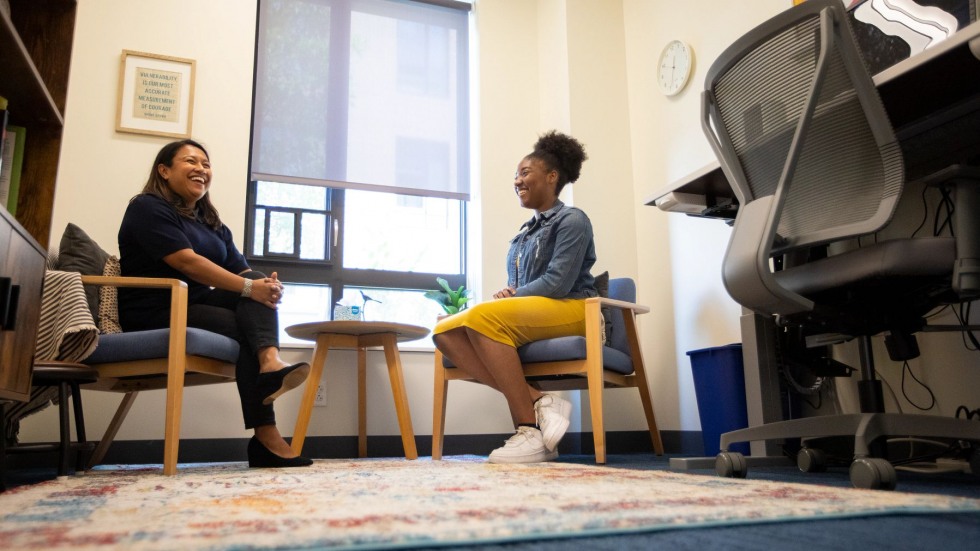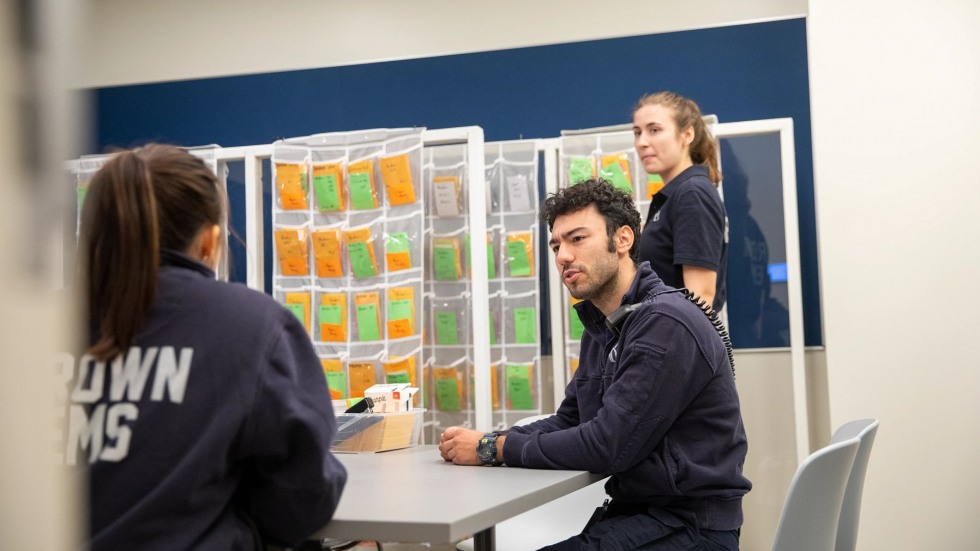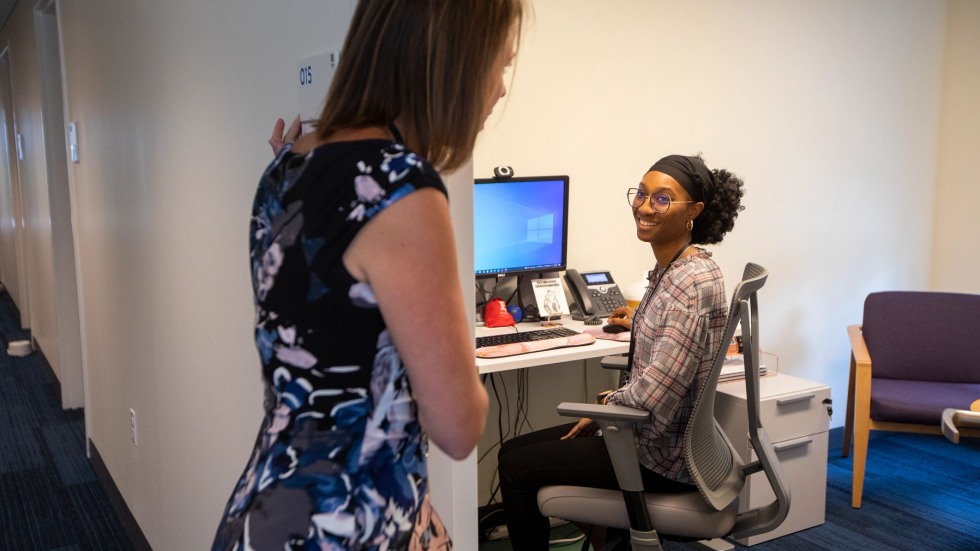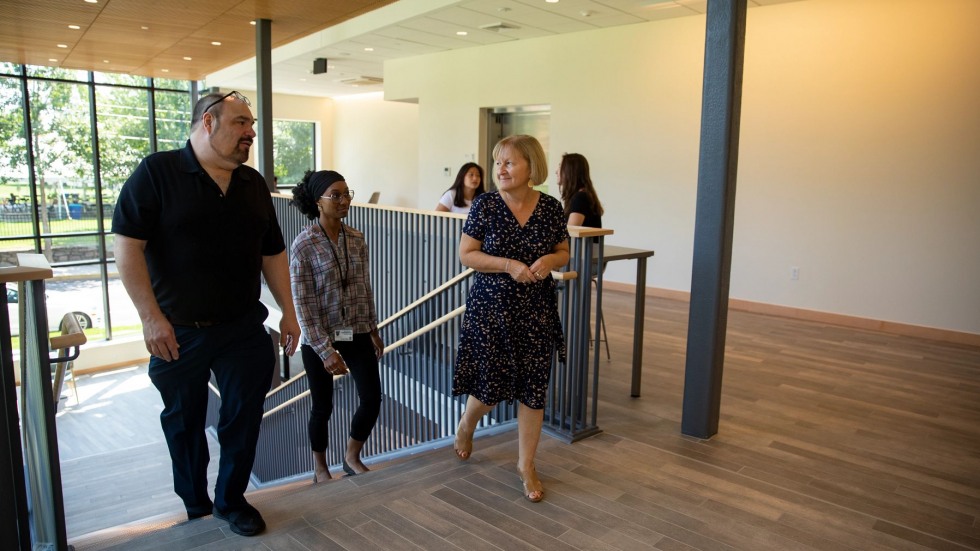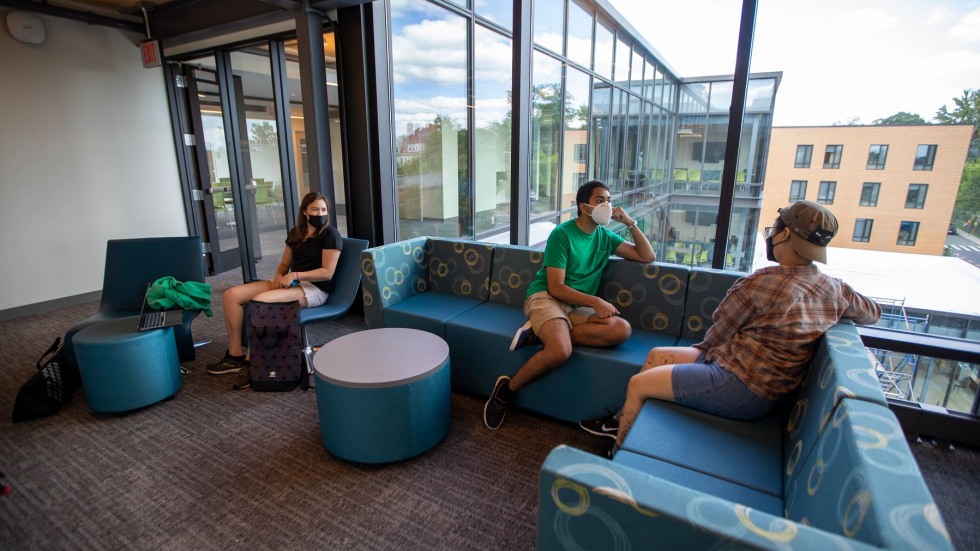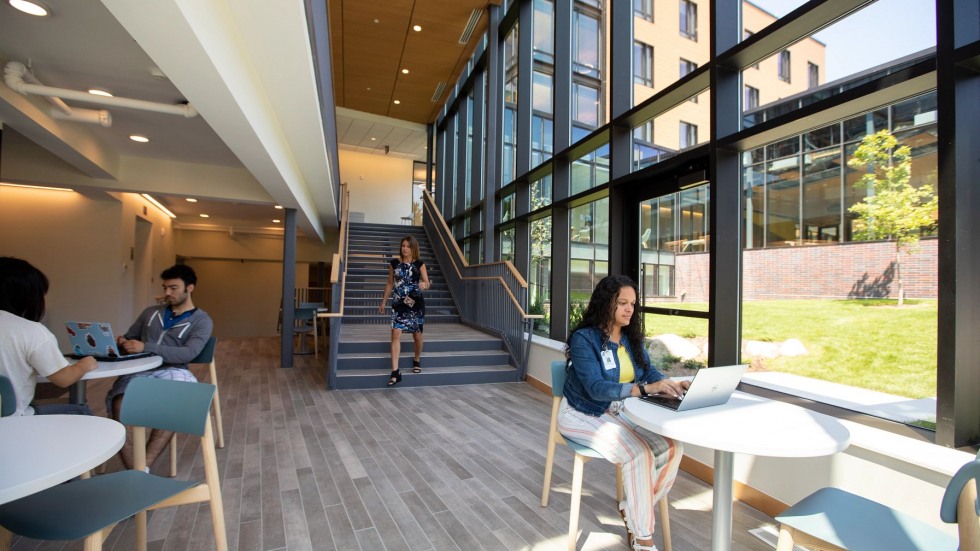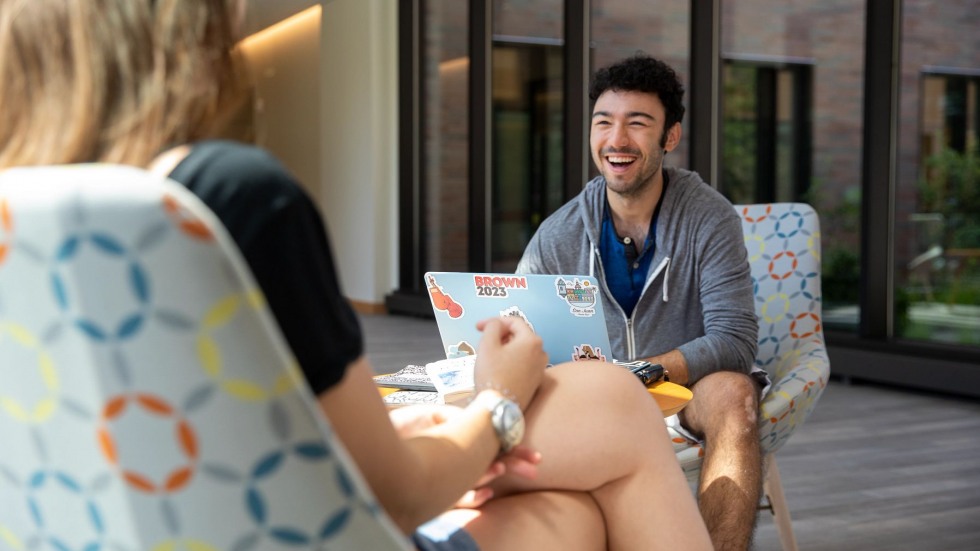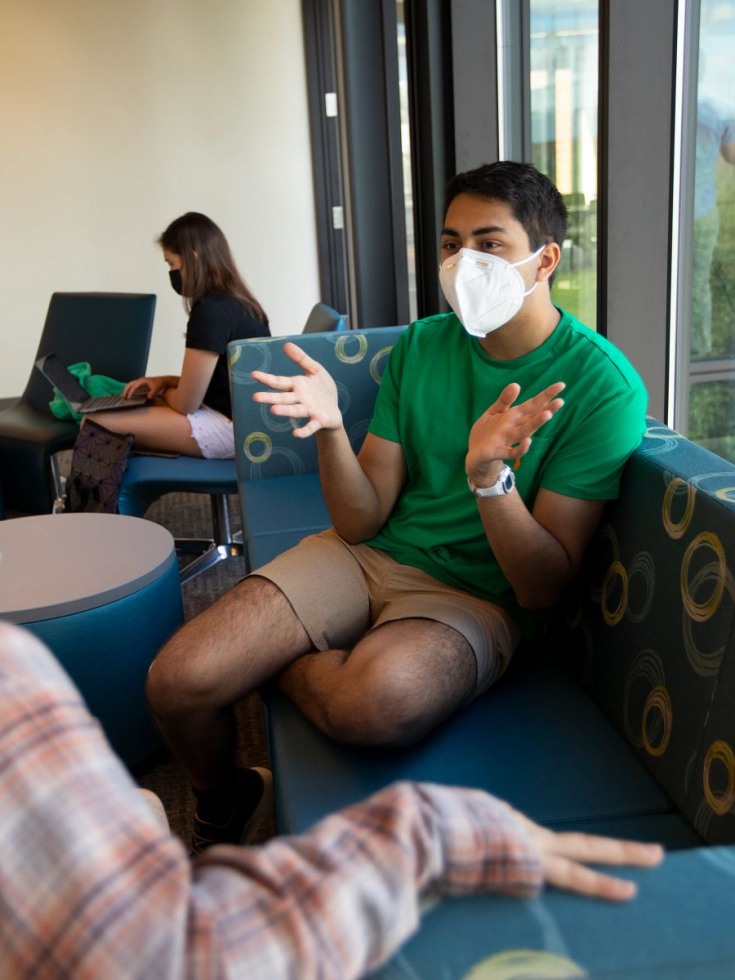PROVIDENCE, R.I. [Brown University] — In early September, Brown’s newest building — and the first new residence hall to open on campus in 30 years — welcomed its first cohort of yearlong residents, marking the final step in implementing the University’s vision of an integrated space to support student wellness.
Located at 450 Brook St. in Providence, the new health and wellness center and residence hall now houses 162 students who share a deep commitment to sustaining healthy lifestyles and promoting well-being in the Brown community and beyond. The building brings together in the same space services and programs instrumental to students’ physical and emotional well-being — including Health Services, Counseling and Psychological Services, Brown Emergency Medical Services and BWell, the University’s health promotion program.
After construction finished in Spring 2021, the building started to come to life this summer, when four of its health and wellness services and programs moved in at staggered intervals from June to August. It also housed students during Brown’s summer term, the last of three “de-densified” semesters to allow for reduced campus occupancy during the pandemic.
Now, with the arrival of its first cohort of students dedicated to building healthy communities, the vision for the center and residence hall is fully realized — to serve as an inclusive, integrated space focused on the well-being of Brown students, said Dr. Vanessa Britto, executive director of health and wellness.
“The new health and wellness center and residence hall presents Brown with an extraordinary opportunity to be innovative in how we support health and well-being,” Britto said. “By bringing together many of the services and programs that focus on health and wellness, the center will create a campus-wide environment that guides all students as they learn how best to care for themselves physically and emotionally.”
